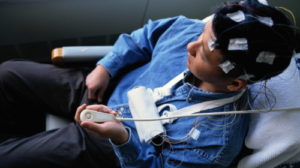Introduction
When faced with a clinical emergency situation, understanding exactly how to respond can be the distinction between life and fatality. This is where understanding first aid procedures such as DRSABCD comes into play. Established by Australian first aid organizations, DRSABCD provides an organized technique to evaluating and handling emergency situations successfully.
In this detailed overview, we will certainly check out each element of the DRSABCD procedure thoroughly, review its importance in first aid courses, and offer you with crucial understandings on just how to use it in real-life situations. From CPR techniques to psychological health first aid, our purpose is to equip you with the knowledge essential for efficient intervention.
What is DRSABCD?
DRSABCD stands for Threat, Response, Send out for assistance, Airway, Breathing, Blood Circulation, and Defibrillation. Each action is essential in figuring out the suitable response during an emergency scenario.
- Danger: Constantly assess the scene for possible threats before intervening. Response: Inspect if the individual is responsive by gently drinking them and speaking loudly. Send for help: If the person is less competent or requires immediate assistance, telephone call emergency situation services. Airway: Make sure that the airway is clear to assist in typical breathing. Breathing: Analyze whether the individual is taking a breath normally. Circulation: Check for signs of flow like activity or pulse; if absent, begin CPR. Defibrillation: If offered, utilize an Automated External Defibrillator (AED) as soon as possible.
Understanding DRSABCD: Your Lifesaving First Aid Protocol will not only enhance your expertise however additionally equip you to act with confidence in emergencies.

Why Learn First Aid?
Importance of First Aid Training
First help training is important because it prepares individuals to manage emergency situations properly. Whether it's a minor injury or a serious circumstance such as heart attack needing CPR (cardiopulmonary resuscitation), having trained personnel can conserve lives.
Benefits of Taking a First Aid Course
Increased Self-confidence: Understanding how to react properly minimizes panic throughout emergencies. Skill Development: Hands-on training teaches practical skills that can be applied immediately. Certification Opportunities: Finishing a recognized course commonly results in qualification which enhances employability in several sectors.Types of First Aid Rushes Available
There are various kinds of first aid courses customized to certain demands:
- Standard First Aid CPR Training Mental Wellness First Aid Childcare First Aid Workplace Security Programs (like Guidebook Handling)
Understanding Each Action of DRSABCD
1. Danger: Assessing the Scene
Before rushing into any kind of circumstance, guarantee your safety which of others around you. Look out for:
- Traffic hazards Fire or smoke Electrical dangers Aggressive individuals
Tips for Ensuring Safety and security:
- Use care when coming close to a case scene. Wear individual safety devices if available.
2. Reaction: Inspecting Consciousness
To determine if an individual calls for help:
Gently drink their shoulders while loudly asking if they are okay. Observe their facial expressions and movements.What If They Are Unresponsive?
If they show no feedback:
- Call emergency solutions immediately.
3. Send out for Assistance: Calling Emergency Situation Services
When calling for help:

Key Details to Communicate:
|Information Needed|Instance|| -----------------------|--------------------------------|| Place|"Corner of King St and Key St"|| Nature of Emergency|"A person has broken down"|| Variety Of Individuals Included|"One less competent adult"|
4. Air Passage: Ensuring Respiratory Tract Is Clear
After examining responsiveness:

Remember:
Always inspect the person's mouth after opening the airway but do not execute blind finger brushes up unless you see something clearly lodged.
5. Breathing: Checking For Signs Of Life
Once you have actually protected an open respiratory tract:
Look for chest rise and fall. Listen carefully for breath seems or feel for breath on your cheek.What If They Are Not Breathing?
If breathing has actually quit or appears abnormal:
Begin CPR immediately!6. Flow: Doing CPR
Cardiopulmonary Resuscitation (CPR) involves two key components:
Chest Compressions Rescue Breaths (if educated)Follow these actions:
Chest Compressions
Place heel of one hand on center of chest; location various other hand on top. Press down hard and fast at a price of 100-- 120 compressions per minute.Rescue Breaths
Only execute rescue breaths if educated:
After every 30 compressions, give 2 rescue breaths. Each breath must last concerning one 2nd-- look for breast rise.7. Defibrillation: Utilizing an AED
Automated External Defibrillators (AEDs) are important during cardiac arrests:
Turn on the AED and comply with voice prompts. Attach pads as suggested-- one over right nipple and one listed below left armpit.Important Notes Concerning AEDs
AEDs are designed for nonprofessionals; they examine heart rhythm automatically and just suggest shock when necessary.
Mental Wellness First Aid: A Vital Component
While physical injuries dominate discussions around first aid training courses, psychological wellness emergencies call for equal attention.
Understanding Mental Wellness Emergencies
Mental health situations can show up as anxiety assaults, self-destructive thoughts, or severe state of mind disorders influencing behavior dramatically.
How Can You Help?
Providing psychological wellness first aid includes:
Listening nonjudgmentally Encouraging specialist help Offering peace of mind however staying clear of clichés like "simply comfort."Common Circumstances Where DRSABCD Applies
Understanding exactly how DRSABCD applies throughout various scenarios can strengthen its value in real-life situations.
Scenario 1: Heart Arrest
This situation exhibits why recognizing DRSABCD is necessary-- responding swiftly can considerably raise survival rates via prompt application of CPR and defibrillation utilizing an AED.
Scenario 2: Choking Incidents
In instances where somebody appears not able to breathe as a result of choking:
Apply back impacts adhered to by stomach drives while adhering to steps described under DRSABCD until help shows up or blockage clears.
FAQs Regarding DRSABCD Protocol
Q1: For how long does a first aid certificate last?
A: Usually lasts 3 years prior to requiring renewal via correspondence course such as HLTAID011 Give First Aid courses provided across the country including alternatives near me like 'first aid course sydney' and so on, depending upon area preferences!
Q2: Can anybody take a first aid course?
A: Absolutely! Courses are readily available Additional resources from newbie degrees up with progressed training fit also towards specialized areas like child care first-aid classes!
Q3: What does CPR stand for?
A: Cardiopulmonary Resuscitation-- a lifesaving treatment executed when a person's heartbeat stops!
Q4: Is mental wellness first aid covered under standard training?
A: While often different subjects within more comprehensive programs; many trusted companies currently consist of some facets relevant especially towards sustaining people experiencing psychological health and wellness problems along with physical actions instructed during common lessons!
Q5: Just how do I locate a first aid training course near me?
A: Simply search online making use of terms like "first aid program near me" along with certain places such as "first aid course brisbane" generating different choices tailored towards geographical needs/preferences noted throughout numerous systems advertising education chances in your area available!
Q6: What's included in basic life support?
A: Basic Life Support generally incorporates procedures ranging from evaluation checks laid out formerly under DRSABCD through useful applications including compression methods based upon standards established by organizations like Red Cross/other accredited establishments supplying qualifications appropriate across several setups consisting of workplaces/schools/community occasions etc, enhancing expertise retention additionally enhancing total readiness levels within areas hence enhancing public safety standards!
Conclusion
Understanding DRSABCD isn't just about memorizing steps; it has to do with cultivating a mindset geared towards preparedness that can inevitably conserve lives! By committing time toward learning these principles via recognized resources providing detailed training courses-- whether on the internet formats/even hands-on trainings offered often within various neighborhoods-- you equip on your own not just with important abilities yet also add positively towards building safer environments anywhere they may first aid training details Salisbury be needed most! So why wait? Enlist today!
By integrating both conventional physical reactions together with emerging patterns surrounding psychological wellness into academic structures surrounding public security efforts-- we cultivate better strength among populaces while nurturing much healthier societies altogether!